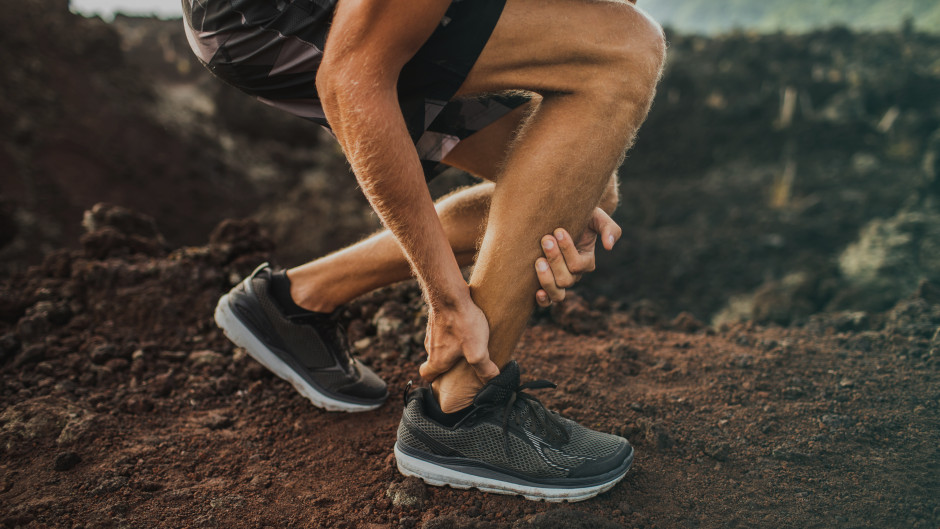Discs don't slip Dammit
Our communication to our patients is very important and that begins with good understanding of the anatomy and physiology. Jarod does a great job explaining why we shouldn’t be fearful for our back and that a disc can’t slip.
Jarod Hall is a physio, clinic director, adjunct assistant faculty member, and regular lecturer on managing complex patients with a simple approach rooted in the biopsychosocial model. He’s written extensively on manual therapy, pain science, simplifying clinical practice, and various other physical therapy topics. You can follow him on Facebook and Twitter: @jarod_hall.
Check out his great blog site: www.DrJarodHallDPT.blogspot.com
Intervertebral discs. The all-important mighty disc. The center of spine dysfunction. The bringer of pain. The elusive mystical creature that lives in your back and makes pain travel down your leg. Discs have gained quite a reputation in society today. Everyone seems to “know” a little about discs and have a lot more to say about them. Most tend to view discs as quite fragile, easily injured, and even easily mobile structures in your spine. But how accurate are the common beliefs? As I continue to have conversations with patients AND health care providers it becomes more evident that an accurate perception of these anatomic structures in relation to anatomy, function, and pain isn’t all that clear.
Anatomy
So what role does this disc play? What is the actual anatomy of the disc? How often is it really injured? Can it heal? Does it “slip”? These are all valid questions we should take some time to answer. As you can see from the following diagram the disc lies between your vertebrae.

Every segment in your spine has a disc except for the C1-C2 level and the level between the bottom of your skull and the top vertebrae (C0-C1). Each disc forms a fibrocartilaginous joint between two vertebrae to allow slight movement of the vertebrae, and acts as a ligament to hold the vertebrae together. This type of fibrocartilage joint can also be referred to as a symphysis. If you know anything about symphysis joints, you know that they are EXTREMELY STRONG. Other examples are the pubic symphysis which connects to two pubic bones in your anterior pelvis, as well as the joint between the sternum and manubrium in your chest. All of these are examples of very robust joints that can withstand tremendous amounts of force without fail. Discs also play an important role as shock absorbers in the spine. Their structure is uniquely designed to allow this to happen effortlessly.
Discs are composed of an outer fibrous ring referred to as the annulus fibrosus. The annulus fibrosus consists of several layers or rings of fibrocartilage made up of both type I and type II collagen. These layers surround an inner gel-like center material referred to as the nucleus pulposus. The nucleus pulposus contains loose fibers suspended in a muco-protein gel which helps to distribute pressure evenly across the disc and prevent excessive forces on the vertebral end plate. In the following pictures you can appreciate the approximate anatomy of both the disc and the vertebral end plate.


The interesting thing about the vertebral end plate is that there is both a bony and cartilaginous endplate that create an exceptionally strong connection to the annulus of the disc making it IMPOSSIBLE for the disc to SLIP. Yes, you heard that right. DISCS CANNOT JUST SLIP OUT OF PLACE willy-nilly like a bar of soap in the shower. The endplates function to hold discs in place, evenly spread applied loads, and to provide anchorage for the collagen fibers of the disc. They also act as a semi-permeable interface for the exchange of water and solutes which can be seen in the following illustration.

Discs don’t slip
I can’t count the number is times I’ve heard the following quotes. “I’ve had back pain ever since I slipped a disc back when I was 29”. “Don’t bend over like that you’ll slip a disc”! “Don’t lift that, it’ll slip your disc”! “I can’t do that I’ve got a slipped disc”. The problems with these statements are that discs DO NOT and CAN NOT slip.
Can discs get injured? Sure. Can discs heal? Absolutely. But how strong are discs really? This study here examined the compressive and tensile strength of thoracic discs in both young and older populations. (28 +/- 8 and 70 +/- 7 years of age respectively). They found that it takes about 740lbs of force to compress the disc height 1mm in young subjects and 460lbs of force to compress the disc height 1mm in older subjects. Keep in mind this is in cadaveric discs with bony support cut away and no active co-contraction in any surrounding muscle tissue. Obviously, in a normal well-functioning human there is quite a bit of extra strength and stability added by active contractile structures. End story is that discs are VERY strong. However, we know that shearing forces are much more likely to injure discs, just as they are more likely to injure ligaments. This is why it is likely not a good idea to lift heavy items off of the ground with end range spinal flexion in a jerking twisting motion.
https://www.youtube.com/watch?v=1e4SBxgqBEY
But what about after a disc is already injured? The following chart does a fine job at displaying what percentages of discs that are injured to various degrees heal.

(Nakashima H, Yukawa Y, Suda K, Yamagata M, Ueta T, Kato F. Abnormal findings on magnetic resonance images of the cervical spines in 1211 asymptomatic subjects. Spine. 2015;40(6):392-8.)
I have written extensively on this topic in another article titled “What if I told you discs heal?”. Additionally, a disc “injury” quite often happens in the absence of any pain and you don’t even know about it. Plenty of high quality research shows that the odds are you have a pain free and benign disc “injury” as you sit here and read this article.
Do not harm
The true heart of the issue and point of this article is not to get in a fight over semantics with discs “slipping” and what really happens. Instead, it is to convey the importance of being educated on the true nature of the anatomy in which we deal with and educate patients on daily. How can we expect patients to succeed if we pump them full of false information that likely creates vivid mental imagery of a spinal disaster? If we reinforce feelings and mindsets of fragility related to the spine we are committing a physical therapy sin. We are breaking our vow to do no harm. We are promoting a scenario that is in contrast to our very name. We are PHYSICAL therapists. It is unlikely many people have strong urges to get back to being PHYSICAL if they are afraid they have a “slipped” disc that is out of place and teetering on the edge of a catastrophic blow out.
If you read this article, I ask you to join into an agreement with me to stop being part of the problem. Be purposeful in the language you use and manner in which you explain conditions to patients. I hate to be the language police, but it is becoming increasingly obvious that what we say to our patients CAN have quite the enduring impact.
I do hereby solemly swear to make a diligent effort to choose the language I use to explain injuries and painful states to my patients, friends, family, and other healthcare providers. I will abstain from using terms including, but not limited to, slipped disc, ruptured disc, degenerative joint disease, degenerative disc disease, torn disc, frozen shoulder, impingement, pinched nerve, trapped nerve, crushed nerve, crushed disc, etc. I vow that I will try my dammedest to not be a twatwankle that encourages fear avoidance behavior and ideas that the human body is fragile.
X__________________________________
Thanks again for reading,
Jarod Hall, PT, DPT, CSCS
If you want to stay up to date and keep learning high quality information as a therapist, then a subscription to Trust me-ED, the "Netflix for Physiotherapists" would be great for you. You can watch a new lecture every two weeks, made by experts in our field.
You can sign up today and join the growing community of therapists who strive to be better here:



